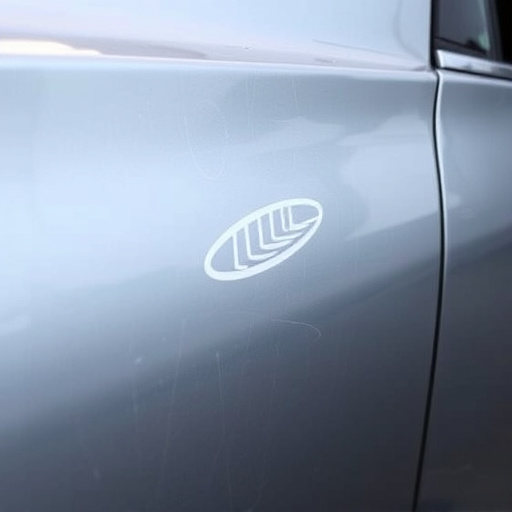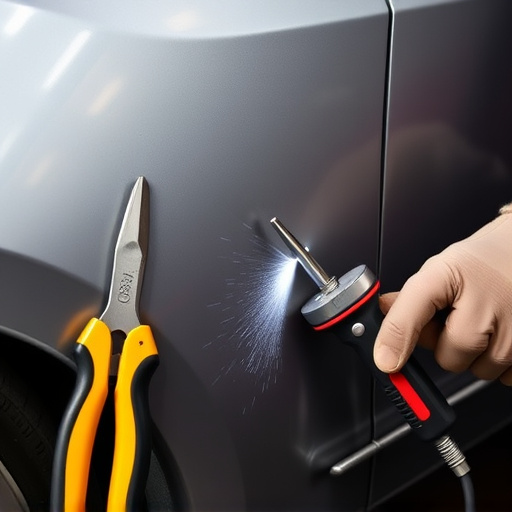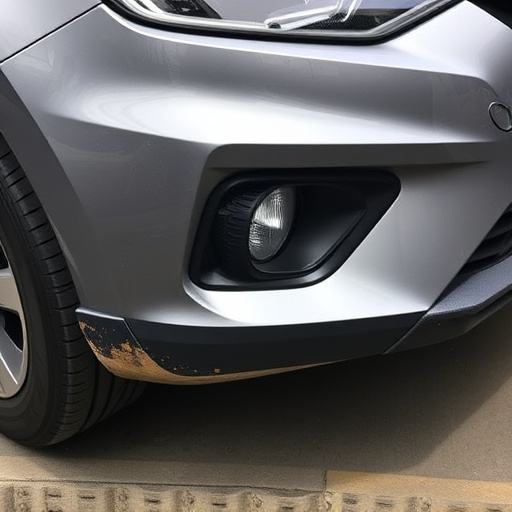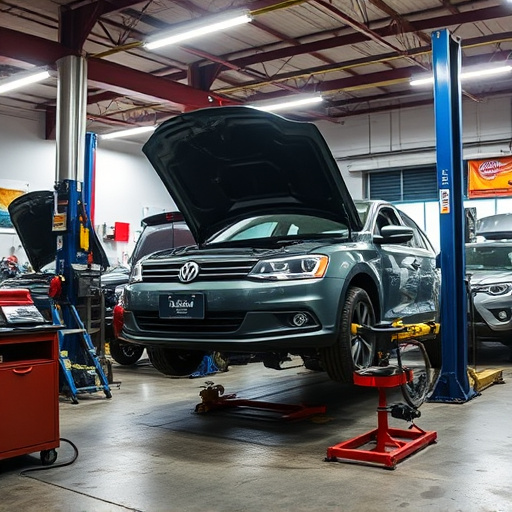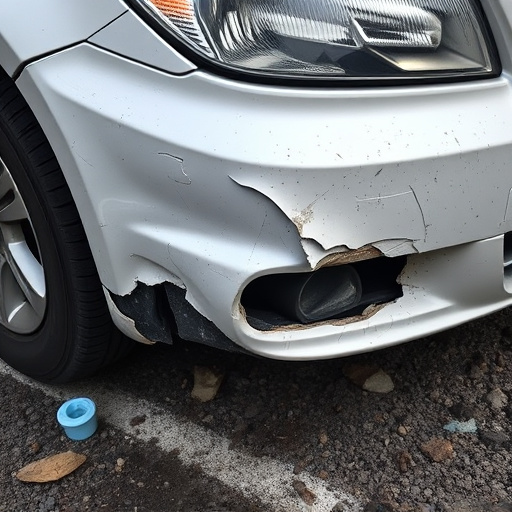Mercedes high-voltage disconnect (HVD) systems are critical safety features that interrupt power to sensitive components in case of accidents or system failures, preventing short circuits and overheating. Verifying HVD functionality through continuity testing is essential for safe and reliable auto repairs, particularly during frame straightening and paint jobs, ensuring the integrity of Mercedes vehicle electrical systems and preventing potential damage to sensitive electronics.
Mercedes vehicles are renowned for their advanced technology, and the high-voltage (HV) system is no exception. Understanding the HV disconnect process is crucial for maintaining these cutting-edge cars. This article provides a comprehensive guide, from grasping the basics of Mercedes HV disconnect to performing step-by-step verification tests. We’ll explore why this procedure is essential for ensuring the electrical system’s integrity, offering a practical reference for both professionals and enthusiasts alike.
- Understanding Mercedes High-Voltage Disconnect: A Comprehensive Overview
- Step-by-Step Guide to Performing a High-Voltage Disconnect Verification Test
- Post-Disconnect: Ensuring Electrical System Integrity through Continuity Testing
Understanding Mercedes High-Voltage Disconnect: A Comprehensive Overview

Mercedes high-voltage disconnect systems are a critical component for maintaining vehicle safety and performance. These advanced mechanisms are designed to interrupt power flow in case of an accident or system failure, minimizing damage and enhancing driver protection. Understanding how this system operates is essential for both automotive professionals and enthusiasts.
The high-voltage disconnect (HVD) acts as a safeguard by severing the electrical connection to sensitive components, such as the battery, under certain conditions. This process prevents short circuits and overheating, which could lead to more severe vehicle damage or even hazards. When a trigger event occurs—like an airbag deployment or detection of a collision—the HVD quickly cuts power, ensuring the safety of the vehicle’s occupants and nearby emergency responders. For those seeking reliable auto repair near me, understanding these intricate systems is vital for comprehensive vehicle maintenance, including frame straightening and even vehicle paint repair services.
Step-by-Step Guide to Performing a High-Voltage Disconnect Verification Test

Performing a Mercedes high-voltage disconnect verification test is a crucial step in ensuring the safety and functionality of your vehicle’s electrical system, particularly during fender repairs or bumper replacements. Here’s a step-by-step guide to help you through the process:
1. Safety First: Before beginning, ensure that your auto body shop environment is safe. Turn off the engine and apply the parking brake. Put on protective gear, including gloves and safety glasses, as high-voltage systems can pose significant risks.
2. Locate the High-Voltage Disconnect (HVD): HVDs are designed to interrupt power flow in case of an accident or repair. In Mercedes vehicles, they’re typically located near components like doors, hoods, or fenders that are prone to damage during auto body shop work.
3. Disconnect the High Voltage: Using a suitable tool, carefully unplug the high-voltage cable from the HVD. This step should be done with precision to avoid damaging the cable or the connector.
4. Perform Continuity Test: After disconnecting, conduct a continuity test using a multimeter to verify that there’s no electrical flow through the circuit. This ensures the HVD is functioning correctly and can safely interrupt power during repairs like bumper repair or fender repair.
5. Reassemble and Verify: Once the test is confirmed successful, carefully reinstall the HVD and ensure all connections are secure. Double-check your work to confirm that the system operates as expected.
Post-Disconnect: Ensuring Electrical System Integrity through Continuity Testing

After performing a Mercedes high-voltage disconnect, it’s paramount to verify the electrical system’s integrity through continuity testing. This crucial step ensures that all components are still connected and functioning correctly, minimizing the risk of short circuits or power surges that could damage sensitive electronic systems. By checking for continuity, technicians can identify any loose connections or damaged wires that may have been exposed during the disconnect process.
Continuity testing is a vital part of vehicle repair, especially in collision centers or car body repair shops where meticulous work is required. It helps maintain the reliability and safety of Mercedes vehicles, guaranteeing that high-voltage systems operate seamlessly after repairs or modifications. This simple yet effective practice underscores the importance of thorough diagnostics for optimal vehicle performance and passenger safety.
The process of performing a Mercedes high-voltage disconnect followed by continuity test verification is crucial for maintaining the electrical system’s integrity and performance. By understanding the high-voltage disconnect mechanism and adhering to a structured step-by-step guide, automotive professionals can ensure reliable results. Post-disconnect, continuity testing plays a vital role in identifying any potential issues, thereby fostering optimal vehicle operation. This comprehensive approach, detailed in this article, equips mechanics with the knowledge to navigate the intricacies of Mercedes high-voltage disconnect procedures.





